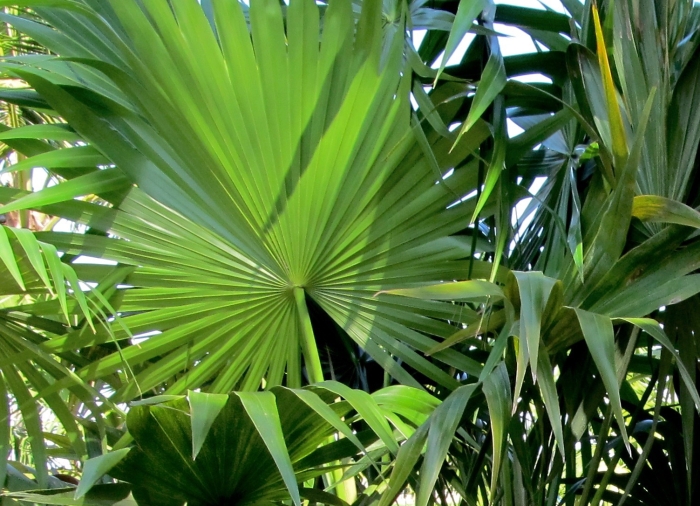Florida Thatch Palm
(Thrinax radiata)
Florida Thatch Palm (Thrinax radiata)
/
/

Treeworld Wholesale
CC BY 2.0
Image By:
Treeworld Wholesale
Recorded By:
Copyright:
CC BY 2.0
Copyright Notice:
Photo by: Treeworld Wholesale | License Type: CC BY 2.0 | License URL: https://creativecommons.org/licenses/by/2.0 | Uploader: Vítor | Publisher: Wikimedia Commons | Title: Thrinax_Radiata_(Florida_Thatch_Palm)_(28893785065).jpg | Notes: {{Information |Description ={{en|1=Location taken: Fairchild Tropical Botanic Garden, Miami, FL USA. Names: Thrinax radiata Lodd. ex Schult. & Schult.f., Broom Palm, Chit, Florida Thatch, Florida Thatch Palm, Florida Thatchpalm, Guanillo,


















































Estimated Native Range
Summary
Thrinax radiata, commonly known as Florida thatch palm, is a slow-growing evergreen palm native to coastal regions, including beaches, coastal hammocks, and limestone outcroppings in the Caribbean, Mexico, Central America, and southern Florida. It typically reaches up to 20 feet (6 meters) tall and features a slender, smooth trunk topped with a canopy of large, fan-shaped, segmented leaves that are glossy green above and silvery underneath. The small, fragrant, white flowers are showy and bloom throughout the year, followed by small, round, white drupes that are attractive to wildlife.
Florida thatch palm is valued for its high salt tolerance and is often used in coastal landscaping for its tropical appearance and ability to withstand hurricane-force winds. It is also utilized in traditional crafts, such as thatching. In cultivation, it requires well-drained, sandy, calcareous soils and thrives in full sun to partial shade. While it is drought-tolerant once established, regular watering is beneficial during extended dry periods. Thrinax radiata is not typically prone to serious pest or disease problems, but it can be outcompeted by invasive species in its native habitat.CC BY-SA 4.0
Florida thatch palm is valued for its high salt tolerance and is often used in coastal landscaping for its tropical appearance and ability to withstand hurricane-force winds. It is also utilized in traditional crafts, such as thatching. In cultivation, it requires well-drained, sandy, calcareous soils and thrives in full sun to partial shade. While it is drought-tolerant once established, regular watering is beneficial during extended dry periods. Thrinax radiata is not typically prone to serious pest or disease problems, but it can be outcompeted by invasive species in its native habitat.CC BY-SA 4.0
Plant Description
- Plant Type: Tree
- Height: 20-20 feet
- Width: 6-10 feet
- Growth Rate: Slow
- Flower Color: N/A
- Flowering Season: Spring, Summer
- Leaf Retention: Evergreen
Growth Requirements
- Sun: Full Sun
- Water: Medium
- Drainage: Fast, Medium
Common Uses
Bird Garden, Butterfly Garden, Low Maintenance, Potted Plant, Rock Garden
Natural Habitat
Coastal regions, including beaches, coastal hammocks, and limestone outcroppings
Other Names
Common Names: Florida Thatch Palm , Sea Thatch Palm , Jamaican Thatch , Silk-Top Thatch Palm , Thatch Palm
Scientific Names: Thrinax radiata , Coccothrinax martii , Coccothrinax radiata , Coccothrinax radiata , Porothrinax pumilio , Porothrinax pumilio , Thrinax aurata , Thrinax elegans , Thrinax elegantissima , Thrinax ferruginea
GBIF Accepted Name: